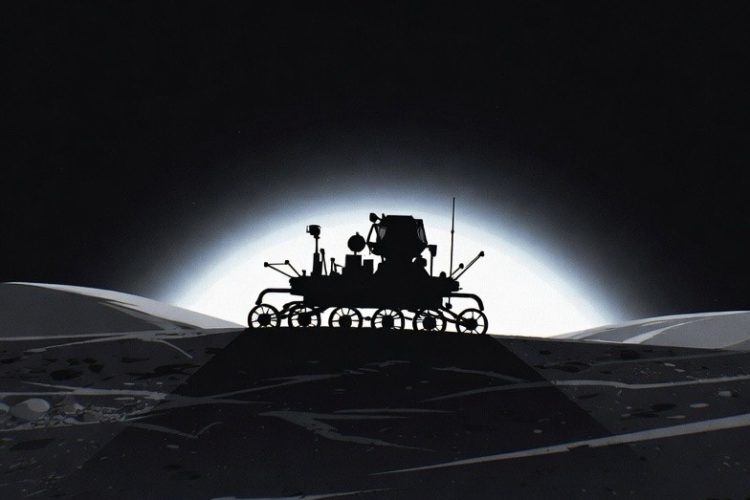Lunokhod 1, the Soviet Union’s groundbreaking robotic lunar rover, became the first vehicle to operate on another celestial body when it landed via Luna 17 in Mare Imbrium on November 17, 1970—exactly 55 years ago today. This eight-wheeled, bathtub-shaped rover, designed by Alexander Kemurdzhian and built by Lavochkin, weighed 840 kg and featured a solar-charged lid that closed at night, kept warm by a polonium-210 heater. Remotely controlled from Earth, it far exceeded its 90-day design life, operating for 11 lunar days (321 Earth days), traveling 10.54 km, transmitting over 20,000 images, 206 high-resolution panoramas, and conducting hundreds of soil tests with its X-ray spectrometer and penetrometer. Its French laser retroreflector, silent for decades, was rediscovered in 2010 by the Lunar Reconnaissance Orbiter and remains active for precise Earth-Moon distance measurements. Lunokhod 1 proved long-duration robotic exploration was possible and directly influenced every planetary rover that followed.
Long Version
Lunokhod 1: The World’s First Robotic Lunar Rover
Lunokhod 1 (Russian: Луноход-1, “Moonwalker 1”), officially designated 8ЕЛ №203, remains the first rover to successfully operate on the surface of another celestial body. Delivered by the Soviet Luna 17 spacecraft, this eight-wheeled, remotely controlled vehicle achieved a landmark in planetary exploration during the height of the Space Race. It traversed the lunar surface for nearly a year, conducted extensive scientific investigations, and transmitted thousands of images and soil analyses back to Earth, far surpassing its original three-month design life.
Origins and the Lunokhod Programme
The Lunokhod series originated in the 1960s as part of the Soviet effort to explore the Moon robotically, initially in support of a planned crewed landing. After the abandonment of the manned lunar programme following repeated failures of the giant N1 rocket, emphasis shifted entirely to uncrewed missions. The rover was developed by the Lavochkin design bureau under Georgy Babakin, with the innovative chassis created by Alexander Kemurdzhian at VNIITransmash. Kemurdzhian adapted principles from terrestrial off-road and military vehicles to meet the unique demands of lunar vacuum, one-sixth gravity, extreme temperature swings, and fine abrasive regolith.
Four complete rovers were built: the first was lost in a launch failure in 1969; Lunokhod 1 flew successfully in 1970; Lunokhod 2 in 1973; and a final unit, never launched, is preserved in a museum.
Launch and Arrival
Luna 17 launched on a Proton-K rocket from Baikonur Cosmodrome on 10 November 1970. After a translunar cruise with two trajectory corrections, the spacecraft entered lunar orbit and, on 17 November 1970, performed a soft landing in the western region of Mare Imbrium (Sea of Rains) at approximately 38.24°N, 35.00°W. Hours later, Lunokhod 1 rolled down twin ramps from the lander and began operations, directed in real time by a team of drivers and engineers using television images transmitted from the rover.
Design and Engineering
The rover’s distinctive bathtub-shaped chassis measured 2.3 m in length, with eight independently driven metal-rimmed wheels that provided excellent traction and redundancy. Total mass was approximately 840 kg. A large convex lid, lined with solar cells on its inner surface, opened during the 14-day lunar daylight to charge batteries and closed at night to retain heat. Survival through the −150 °C lunar night was ensured by a polonium-210 radioisotope heater and careful thermal design.
Communication relied on a low-gain cone antenna for commands and a high-gain helical antenna mounted on a mast for high-bandwidth telemetry and television. Driving speeds reached up to 2 km/h, and the suspension allowed the vehicle to clear obstacles up to 40 cm high and climb slopes of 20–25°.
Scientific Payload
Lunokhod 1 carried a comprehensive instrument suite:
- Four panoramic telephotometers producing high-resolution stereo images
- A ninth wheel penetrometer (PrOP) that repeatedly measured soil bearing strength and density at more than 500 locations
- An X-ray fluorescence spectrometer (RIFMA) for chemical analysis of regolith
- An X-ray telescope (RT-1) for cosmic observations
- A French-built laser corner-cube retroreflector array for precise Earth–Moon ranging
- Cosmic-ray and radiation detectors
Operational Record and Achievements
Originally planned for three lunar days (≈90 Earth days), the rover operated for eleven lunar days—321 Earth days in total—until contact was lost on 14 September 1971 (officially declared ended on 4 October 1971). During this period it travelled 10.54 km, transmitted more than 20,000 television images, 206 high-resolution panoramas, and performed hundreds of soil mechanics and chemistry tests. Findings confirmed the basaltic composition of Mare Imbrium regolith and provided the first detailed mechanical data on lunar soil behaviour, information critical for future landed missions.
Rediscovery and Continuing Contribution
After 1971 the rover’s retroreflector fell silent for decades. In 2010, high-resolution images from NASA’s Lunar Reconnaissance Orbiter clearly revealed the lander, ramps, rover tracks, and the rover itself in its final parking place. Ground-based laser teams quickly reacquired the French retroreflector, obtaining unexpectedly strong signals that continue to support millimetre-precision measurements of the Earth–Moon distance and tests of gravitational physics.
The visible tracks and intact reflector array make Lunokhod 1 one of the most precisely located human artefacts on the Moon.
Legacy
Lunokhod 1 proved that complex robotic vehicles could survive and function reliably on another world for extended periods using 1970-era technology and real-time human control. Its engineering solutions—wheel design, thermal management, soil interaction models—influenced every subsequent planetary rover from the small Sojourner on Mars in 1997 to the much larger Perseverance and Chinese Yutu series today. As the first mobile robot beyond Earth, Lunokhod 1 opened the era of surface exploration that continues to expand across the Solar System. It rests today in Mare Imbrium, lid likely open, a silent pioneer 55 years after its historic first drive on 17 November 1970.









